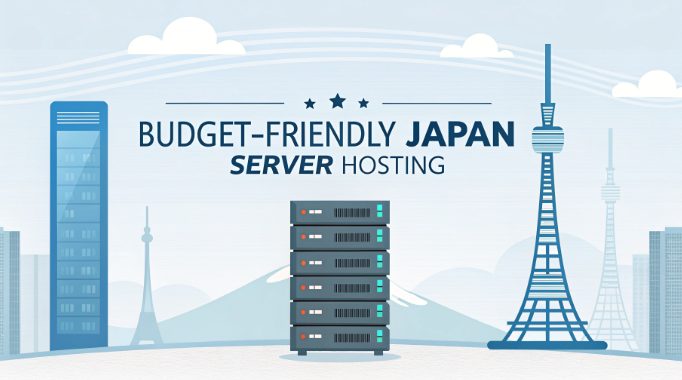How to Choose Budget-Friendly Japan Server Hosting

When establishing a tech infrastructure in Asia, choosing the right Japan server hosting solution while maintaining budget efficiency is crucial. Japan’s robust internet infrastructure, advanced technology ecosystem, and strategic location make it an ideal choice for hosting mission-critical applications. With average network latencies under 50ms to major Asian markets and 99.99% uptime guarantees, Japan hosting providers set the gold standard for reliability. This comprehensive guide will help tech professionals navigate the complexities of server hosting selection while optimizing costs.
Understanding Japan’s Server Market Landscape
Japan’s server hosting market is concentrated in major tech hubs, with primary datacenter clusters in Tokyo, Osaka, and Fukuoka. These locations offer varying advantages in terms of network connectivity, disaster resilience, and cost structures. The market has evolved significantly since 2020, with increased competition driving innovation and cost efficiency.
- Tokyo – Premium tier, highest connectivity
- Direct connectivity to major internet exchanges
- Sub-1ms latency to local networks
- Redundant power systems with N+1 configuration
- Premium pricing due to high demand
- Osaka – Balanced performance and cost
- Strategic disaster recovery location
- 15-20% lower costs compared to Tokyo
- Growing carrier-neutral facility options
- Excellent connectivity to Asia-Pacific
- Fukuoka – Emerging hub, budget-friendly options
- Proximity to other Asian markets
- 30-40% cost savings versus Tokyo
- Developing infrastructure with modern facilities
- Lower power costs and cooling efficiency
Assessing Technical Requirements
Before diving into hosting options, it’s essential to quantify your technical requirements accurately. Modern applications demand precise resource allocation and scalability planning. Consider these crucial factors when determining your hosting needs:
- Traffic Analysis
- Peak concurrent connections: Calculate N+30% for growth
- Data transfer volumes: Monthly average plus seasonal spikes
- Geographic distribution: User location heat mapping
- Traffic patterns: Daily/weekly/monthly fluctuations
- Performance Metrics
- Required response time: Industry standard is <100ms
- Latency tolerance: Consider application architecture
- Processing power needs: CPU utilization patterns
- I/O requirements: IOPS and throughput calculations
Server Configuration Guidelines
Optimal server configurations vary based on workload types. Modern applications require careful balance between performance and cost. Here’s a technical breakdown with real-world application scenarios:
- Entry-Level Setup (Suitable for development/testing):
- CPU: 4 cores @ 2.4GHz (Intel Xeon/AMD EPYC)
- RAM: 8GB DDR4 ECC memory
- Storage: 120GB NVMe SSD (2000 IOPS)
- Bandwidth: 5TB/month with burst capability
- Ideal for 50-100 concurrent users
- Mid-Range Setup (Production workloads):
- CPU: 8 cores @ 3.0GHz (Intel Xeon/AMD EPYC)
- RAM: 16GB DDR4-3200 ECC memory
- Storage: 240GB NVMe SSD (4000 IOPS)
- Bandwidth: 10TB/month unmetered
- Suitable for 200-500 concurrent users
Network Performance Considerations
Network quality significantly impacts application performance. Japanese datacenters typically offer superior connectivity, but careful evaluation is essential. Here’s a detailed analysis of key metrics to evaluate:
- Latency to major Asian hubs
- Tokyo to Singapore: ~60ms
- Tokyo to Hong Kong: ~40ms
- Tokyo to Seoul: ~20ms
- Internal Japan latency: <10ms
- Packet loss rates
- Acceptable threshold: <0.1%
- Peak hour monitoring
- Cross-border performance
- BGP routing efficiency
- Multiple tier-1 providers
- Redundant routing paths
- AS path optimization
- DDoS protection capabilities
- Layer 3/4 mitigation
- Application layer protection
- Traffic scrubbing capacity
Cost Optimization Strategies
Modern hosting environments require sophisticated cost management approaches. Implement these proven strategies to maximize ROI while maintaining performance standards:
- Resource Scaling
- Implement Kubernetes-based auto-scaling
- Configure load balancers with health checks
- Set up predictive scaling based on traffic patterns
- Utilize container orchestration for resource efficiency
- Contract Optimization
- Compare quarterly vs. annual pricing (typical savings: 15-25%)
- Negotiate bandwidth commitments based on 95th percentile
- Evaluate bundled services (DDoS, backup, monitoring)
- Consider hybrid hosting models for cost efficiency
Technical Support and SLA Evaluation
Japanese hosting providers are known for exceptional service quality, but support levels vary significantly. Consider these critical support aspects:
- 24/7 technical support availability
- Native Japanese and English support
- Multiple communication channels
- Average response time guarantees
- Response time guarantees
- Critical issues: <15 minutes
- Major issues: <30 minutes
- Normal requests: <2 hours
- Maintenance windows
- Scheduled maintenance frequency
- Emergency maintenance procedures
- Customer notification protocols
- Uptime commitments
- Network: 99.99% minimum
- Power: 99.999% guarantee
- Hardware replacement: <4 hours
Implementation Best Practices
Successful deployment requires meticulous planning and execution. Follow this comprehensive technical checklist during implementation:
- Initial Setup
- Configure RAID arrays (RAID-10 recommended)
- Implement Prometheus/Grafana monitoring stack
- Set up automated backup systems with verification
- Deploy configuration management tools
- Security Measures
- Configure iptables/nftables firewall rules
- Set up HIDS/NIDS with real-time alerts
- Implement role-based access control (RBAC)
- Enable audit logging and monitoring
Common Technical Pitfalls
Even experienced teams can encounter challenges. Avoid these frequent mistakes in Japan server hosting deployments:
- Underestimating I/O requirements
- Not accounting for database growth
- Ignoring write-intensive workloads
- Insufficient IOPS allocation
- Neglecting backup verification
- Lack of regular restore testing
- Incomplete backup coverage
- Poor retention policy planning
- Insufficient monitoring setup
- Missing key performance indicators
- Inadequate alert thresholds
- Poor visualization configuration
- Poor capacity planning
- Not accounting for seasonal spikes
- Ignoring storage growth patterns
- Underestimating bandwidth needs
Selecting the right Japan server hosting solution requires careful consideration of technical requirements, budget constraints, and performance needs. By following this guide’s detailed recommendations and best practices, tech professionals can make informed decisions that balance cost-effectiveness with operational excellence in their Japan server hosting strategy. Remember to regularly review and adjust your hosting configuration as your requirements evolve and new technologies emerge in the Japanese hosting market.

